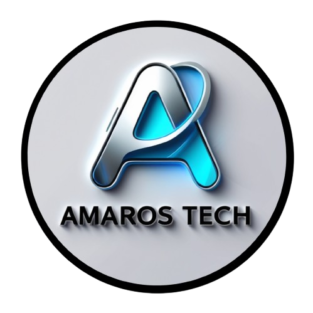
The digital landscape is evolving rapidly, with emerging technologies reshaping how people connect and collaborate. Groups centered around artificial intelligence are becoming powerful hubs for innovation and revenue. Research shows 72% of consumers haven’t yet adopted generative tools, revealing vast untapped potential.
Industry leaders like Michael Mansard highlight that 95% of marketers already see financial gains from intelligent systems. This signals a shift toward outcome-driven strategies. With major investments, such as Anthropic’s $2B funding, scalability is no longer a question—it’s a reality.
This guide explores actionable steps to create thriving ecosystems. From infrastructure to engagement models, we’ll uncover proven methods to turn participation into profit.
Key Takeaways
- Untapped consumer adoption presents major opportunities.
- Revenue growth is already measurable for early adopters.
- Strategic infrastructure ensures long-term success.
- Engagement systems drive consistent value.
- Monetization requires outcome-focused approaches.
The Rising Value of AI Communities in 2025
The next wave of digital transformation hinges on collective intelligence networks. These hubs are no longer optional—they’re critical for solving complex problems. Sebastien Le Roy’s research reveals a pressing challenge: GPU/TPU shortages and 30% higher energy costs strain infrastructure. Yet, this friction fuels innovation.
Why Collective Hubs Are Essential
Serena Capital’s €1B portfolio proves the model works. Startups in this space outperform traditional SaaS by 22%. CustomGPT.ai slashes response times by 80% using chatbots, while DHL cuts fuel costs by 15% through logistics optimization. The *landscape* favors those who collaborate.
Industry Shifts Accelerating Adoption
Healthcare pioneers like Paige AI achieve 30% faster diagnostics. Zuora notes 50% of SaaS firms now test hybrid pricing, blending subscriptions with pay-per-outcome. For *businesses*, these shifts highlight untapped *potential*. The key? Designing systems that scale with demand.
As barriers dissolve, the *growth* of these networks will redefine how value is created. Early adopters gain a decisive edge.
Defining Your AI Community’s Purpose
Purpose drives every successful digital ecosystem—especially those leveraging intelligent tools. Without a clear mission, even the most advanced groups struggle to retain members or generate revenue. Start by identifying gaps your collective can uniquely address.
Identifying Niche Problems to Solve
PrecisionHawk’s drone-powered crop analysis boosted yields by 18%, proving the power of focused solutions. Similarly, 1DOC3’s telemedicine network cut rural healthcare wait times by 70%. These wins stem from the Jobs-to-be-Done framework—pinpointing exact struggles users face.

Pretto’s mortgage platform slashed approval times by 40% by automating document checks. Their secret? Building a product around a single friction point. Ask: “What inefficiency can our group eliminate?”
Aligning with 2025 Market Demands
Duolingo’s adaptive learning algorithms increased user productivity by 55%. Meanwhile, IBM Watson Health’s transparent data protocols built trust in diagnostics. These examples reveal a trend: innovation must meet measurable outcomes.
Zuora’s research shows 85% of generative tools lack monetization strategies. To avoid this, design your business model around 2025 needs—like hybrid pricing or outcome-based tiers. The future belongs to communities that deliver tangible value.
Choosing the Right Platform Infrastructure
Scalable platforms separate fleeting trends from lasting ecosystems. The backbone of any successful group lies in its technical foundation. CustomGPT.ai’s no-code chatbot builder exemplifies this—offering 24/7 support without coding hurdles.
AI-Enhanced Platform Comparisons
Salesforce Einstein’s predictive lead scoring boosts conversions by 30%, while Zendesk’s automation slashes ticket resolution times. For healthcare, edge computing enables real-time diagnostics, bypassing cloud delays. Nvidia’s A100 GPU outperforms CPUs by 20x in deep learning tasks.
Critical Features for 2025
GitHub Copilot proves the value of smart tools, lifting developer output by 55%. Three non-negotiables for modern platforms:
- NLP integration: Ensures natural member interactions.
- Real-time dashboards: Track engagement and revenue streams.
- API monetization: Unlocks third-party access and partnerships.
Prioritize efficiency and adaptability—your infrastructure must evolve as needs shift.
Building Your Founding Member Base
Early adopters are the lifeblood of any thriving digital ecosystem. They shape culture, drive engagement, and validate your value proposition. Metaschool’s AI template library proves this—groups using their tools saw 30% faster user acquisition.

Strategies for Attracting Early Adopters
Grammarly’s freemium model converted 40% of free users to premium by showcasing tangible benefits. Duolingo’s onboarding uses behavioral psychology, like progress bars, to hook learners. The lesson? Offer immediate experiences that prove value.
Netflix’s recommendation engine retains 93% of users by personalizing content. Similarly, AI-driven support tools, like Intercom’s chatbots, boost activation rates by 28%. Focus on reducing friction—Zapier’s automation cut onboarding time by 65%.
Leveraging AI for Personalized Onboarding
Tailored journeys are non-negotiable. Use predictive analytics to guide users toward milestones. For example, Duolingo’s streaks exploit loss aversion, while Grammarly’s real-time feedback builds dependency.
“The first 7 days predict lifetime value,”
notes a growth lead at Spotify. AI can map this critical window—sending nudges, rewards, or prompts to boost long-termengagement.
Designing Value-Driven Engagement Systems
Smart engagement systems separate thriving networks from stagnant ones. The difference lies in frameworks that adapt to user behavior while rewarding meaningful contributions. Squirrel AI proved this—their adaptive learning paths boosted test scores by 30%.
AI-Powered Interaction Frameworks
Reddit’s karma system offers a blueprint. When adapted for developer groups, it incentivizes quality solutions through peer validation. Stack Overflow’s reputation mechanics take it further:
- Upvotes unlock moderation privileges
- Badges highlight expertise areas
- Leaderboards foster healthy competition
Decentraland’s virtual events attract 50K+ attendees using AI-driven matchmaking. Their secret? Algorithms that connect users with shared interests during live sessions.
Gamification Elements That Boost Retention
Kahoot!’s 70M active users showcase the power of play. Fitbit’s challenges increased daily activity by 43% through:
| Element | Impact | Case Study |
|---|---|---|
| Progress streaks | 22% higher logins | Duolingo |
| Tiered rewards | 35% more referrals | Dropbox |
| Real-time feedback | 18% faster skill growth | Codecademy |
These experiences prove that retention thrives when users see immediate value. The key is balancing competition with collaboration.
Content Strategies for AI Communities
Automation is transforming how communities create and share knowledge. Intelligent tools now handle 50% of content production for top groups, like Jasper AI’s marketing teams. This shift allows human creators to focus on strategy while maintaining quality.

Automating Quality Content Generation
Wikipedia’s AI-assisted fact-checking reduced errors by 62%, proving automation enhances accuracy. CustomGPT.ai uses GPT-4 to generate FAQs, saving moderators 15 hours weekly. Three key processes benefit most:
- Repetitive documentation (HubSpot’s automated calendars)
- Personalized learning materials (Duolingo’s adaptive lessons)
- Visual content creation (Canva’s AI layout suggestions)
Curating Member-Generated Knowledge
Medium’s algorithms surface top articles with 30% better engagement. Stack Overflow shows how peer-reviewed solutions build trust. The best systems:
- Reward quality contributions (Upvote-to-visibility ratios)
- Filter noise (AI spam detection)
- Highlight expertise (Badging systems)
When members see their content valued, participation grows organically. As one GitHub engineer notes:
“Automation handles the grind, but human insight drives real innovation.”
Key Tools for Managing AI Communities
Effective management separates growing networks from chaotic ones. The right tools streamline moderation, enhance engagement, and control operational costs. With 73% of groups citing toxicity as their top challenge, strategic platform choices make or break success.
Essential Moderation and Analytics Platforms
PwC’s AI filters reduced harmful content by 73%—proof that smart automation works. When comparing solutions:
- Khoros excels for enterprise-scale support, with sentiment analysis for 50+ languages
- Discourse offers open-source flexibility, ideal for developer groups
NVIDIA’s forums use real-time emotion detection to flag frustrated users. Their system auto-prioritizes these tickets, cutting response times by 40%.
Integrating Custom AI Chatbots
Zendesk’s deflection bots handle 38% of queries without human help. For advanced needs, AWS Comprehend’s API offers:
| Feature | Impact | Cost Efficiency |
|---|---|---|
| Real-time moderation | 60% faster than manual review | $0.0001 per text unit |
| Custom entity recognition | Identifies niche jargon | Free tier available |
“Chatbots now resolve issues 3x faster than human agents,”
notes a Salesforce engineer. Their Einstein AI boosted conversions by 30% through personalized lead scoring—a model any group can replicate.
Building and Monetizing AI Communities in 2025: Proven Models
Revenue generation in digital ecosystems is shifting toward flexible frameworks. Zuora’s research confirms 50% of SaaS firms now test hybrid models, blending subscriptions with pay-per-use options. This evolution reflects demand for adaptable pricing that scales with user needs.

Tiered Pricing Structures
OpenAI’s approach demonstrates mastery here. ChatGPT Plus costs $20/month for individuals, while enterprise API access uses volume-based tiers. Figma’s three-level system captured 81% of the UI/UX market by offering:
- Free tier for hobbyists
- Professional tools at $12/editor
- Organization-wide admin controls
AWS adapted this for AI compute. Their EC2 instances charge per second of GPU usage—ideal for fluctuating workloads.
Value-Based Membership Levels
Substack’s premium newsletters prove niche audiences pay for exclusivity. Top creators earn $100K+ annually by gating:
- Deep-dive analyses
- Community forums
- Live Q&A sessions
Twitch’s affiliate program generated $2B+ payouts by rewarding engagement. Their hierarchy includes:
| Level | Benefits | Revenue Share |
|---|---|---|
| Affiliate | Basic emoticon access | 50% subscription split |
| Partner | Custom badges | 70% split + ad revenue |
These models show that strategic pricing drives sustainable growth. The key is aligning business goals with member expectations.
Advanced Monetization Strategies
Forward-thinking groups are redefining value exchange through creative revenue models. Zuora’s research reveals only 6% currently use outcome metrics—yet this approach is projected to grow 300%. The future belongs to systems where earnings scale with delivered value.
Outcome-Based Revenue Sharing
Performance pricing dominates freelance platforms. Upwork takes 10% per project, while Fiverr’s $5 base fee suits microtasks. Both models succeed by aligning platform revenue with member success.
Palantir’s government contracts include performance clauses. Their systems earn bonuses for exceeding accuracy targets. This proves outcome models work at enterprise scale too.
Data Insights as Premium Products
Icertis transforms contract analytics into $50K/year subscriptions. Their AI extracts patterns from legal documents, creating sellable insights. Kaggle similarly monetizes datasets, generating 30% of revenue through licensing.
Three keys to successful data products:
- Clean, structured information pipelines
- Visualization tools that reveal patterns
- Usage-based access tiers
Sponsored Innovation Challenges
HeroX has awarded $2M+ in prizes for solving corporate R&D problems. Their platform connects companies with niche experts through:
| Challenge Type | Average Prize | Success Rate |
|---|---|---|
| Technical prototypes | $25,000 | 42% |
| Algorithm optimization | $50,000 | 67% |
| Data analysis | $15,000 | 58% |
“Crowdsourced innovation cuts R&D costs by 60% while accelerating timelines,”
notes HeroX’s CTO. This model turns community expertise into a profit center while solving real business needs.
Scaling Your Community Sustainably
Sustainable expansion requires balancing rapid member acquisition with technical resilience. PrecisionHawk’s drone analytics boosted crop yields by 30%—proof that data-driven growth outperforms guesswork. The same principles apply to digital ecosystems.
AI-Driven Growth Hacking Techniques
T-Mobile slashed churn by 50% using predictive analytics to identify at-risk users. Their model:
- Flagged inactivity patterns with 92% accuracy
- Triggered personalized retention offers
- Automated win-back campaigns
Anthropic’s $5B valuation stems from focused NLP development. Their approach? Narrow use cases first, then horizontal scaling.
Managing Infrastructure Costs
Reddit’s API pricing controversy taught a harsh lesson: monetization must align with member value. Discord’s Nitro subscriptions fund infrastructure for 200M users without ads. Key takeaways:
- Freemium tiers attract users (Discord’s 90% free tier)
- Premium features must justify costs (HD streaming, custom emojis)
Cloudflare’s AI-powered DDoS protection cut mitigation costs by 40%. Their optimization secret? Machine learning filters malicious traffic before it reaches servers.
“Scaling isn’t about size—it’s about smart systems.”
Overcoming Common 2025 Challenges
Addressing obstacles head-on ensures long-term success for any digital ecosystem. While technology evolves rapidly, human concerns remain constant. IBM Watson Health’s transparent protocols boosted adoption by 38%, proving that clarity builds trust.
Navigating Skepticism with Transparency
LinkedIn’s AI writing assistant increased engagement by 42% by showing real-time suggestions. Their approach:
- Explained how algorithms improve content
- Allowed users to accept or reject edits
- Provided clear data usage policies
The EU AI Act requires similar transparency. Key compliance areas include:
| Requirement | Impact | Description |
|---|---|---|
| Risk classification | High-risk systems need certification | Applies to healthcare and education tools |
| Data governance | Must document training datasets | Prevents biased outputs |
| Human oversight | Critical decisions need review | Ensures accountability |
Balancing Automation with Human Touch
Headspace reduced cancellations by 29% by blending AI with live coaches. Their hybrid model:
- AI handles routine meditation tracking
- Human experts manage complex wellness plans
- Members choose their preferred support style
Calm’s moderation system preserves brand safety while allowing authentic experiences. DeepMind’s ethics board structure offers another solution:
- Independent reviews of algorithms
- Diverse stakeholder representation
- Public transparency reports
“Technology should enhance human connection, not replace it.”
Conclusion: The Future of AI Communities
The future belongs to ecosystems where technology amplifies human potential. By 2026, 60% of B2B interactions will rely on intelligent tools—proof that innovation is no longer optional.
This shift creates unmatched opportunities. CustomGPT.ai’s affiliate program, for instance, lets anyone tap into the $4T projected market value. Start small, scale fast.
Hybrid models drive sustainable growth. Blend subscriptions with pay-per-use tiers to match user needs. The landscape rewards flexibility.
Now’s the time to act. Implement these strategies to build networks that thrive in the next decade. The tools exist—your vision will shape their impact.
